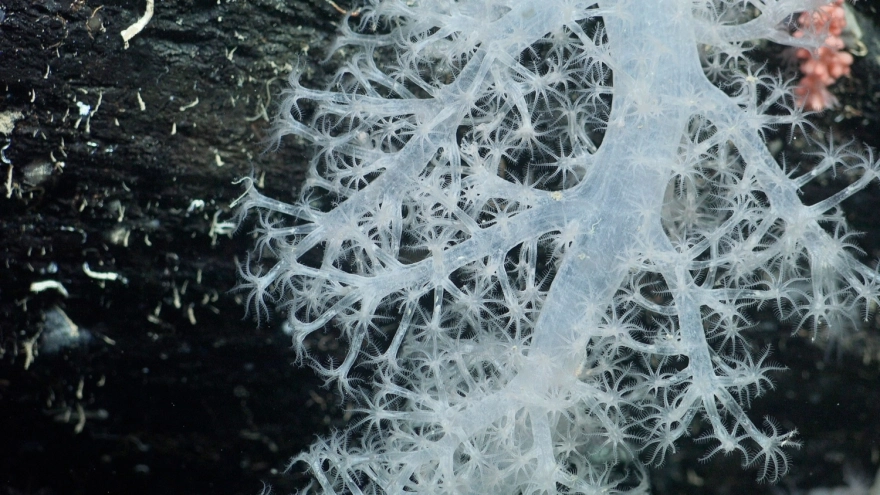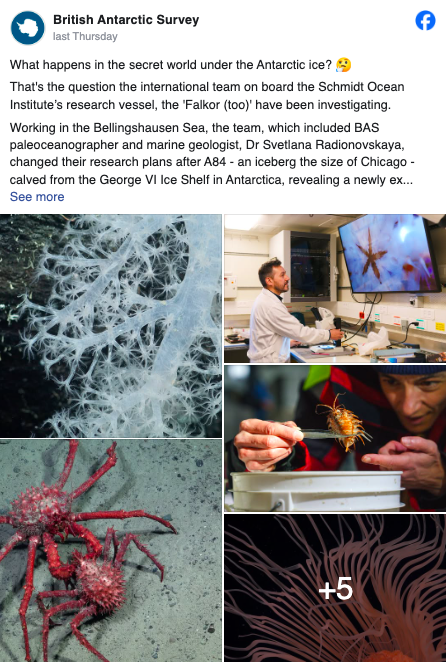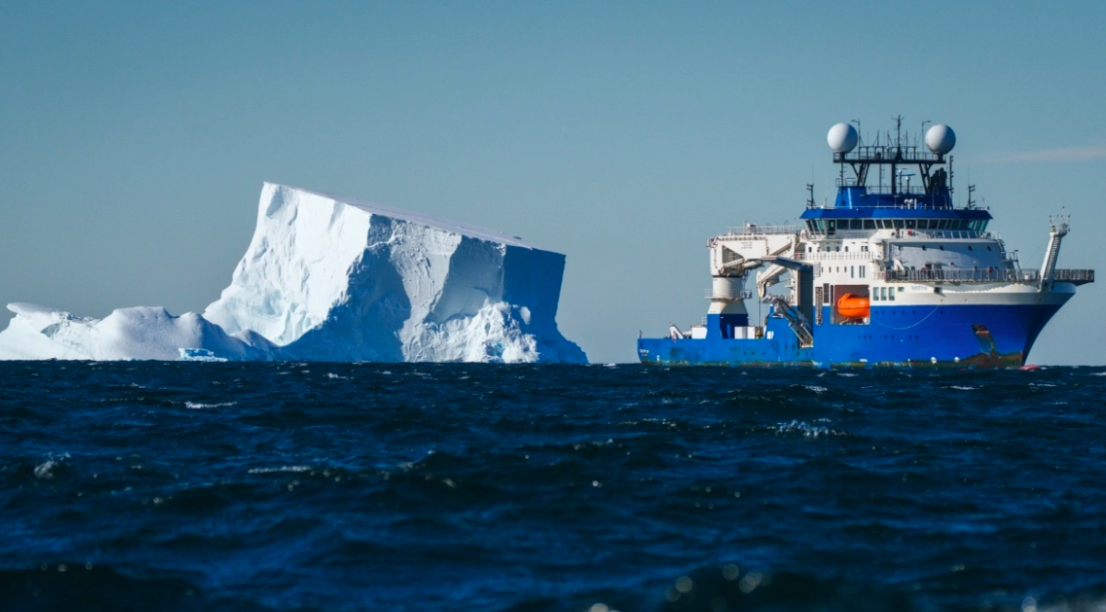Ocean researchers aboard the research vessel Falkor (too) made an unexpected discovery off the coast of Antarctica. Their opportunity arose on January 13, when a massive iceberg, designated A-84, measuring approximately 30 kilometers in length—about the size of Chicago—broke away from the George VI Ice Shelf. This event unveiled an area of the ocean that had been concealed beneath thick ice for decades.

According to The Washington Post, the researchers immediately decided to explore the newly exposed seafloor, an area no human had ever reached before.
“It’s the kind of event that makes you stop everything you’re doing,” said Patricia Esquete, the lead scientist of the expedition. “We seized the moment, altered our mission plan, and pursued the opportunity to see what was happening in the depths below.”

During the mission, the team conducted the first detailed, multidisciplinary study of the area’s geology, oceanography, and biology. The iceberg’s detachment exposed an estimated 510 square kilometers of previously hidden seafloor.
A Surprisingly Rich Underwater Ecosystem
Scientists initially had low expectations, assuming that life beneath such a dense ice layer would be minimal. Instead, they were astonished by their findings.
“We did not expect to find such a beautiful, thriving ecosystem. Based on the size of the animals, the communities we observed have likely existed there for decades, possibly even hundreds of years,” Esquete explained.
Using the remotely operated vehicle (ROV) SuBastian from the Schmidt Ocean Institute, the team conducted an eight-day exploration, reaching depths of up to 1,300 meters.
Among their discoveries were giant sea spiders, octopuses, icefish, corals, and sponges—one of which, shaped like a vase, is believed to be several centuries old. Scientists estimate they may have identified dozens of previously unknown species.
“We were truly amazed by the diversity and richness of the ecosystems we found on the seafloor,” Esquete added, who is a researcher at the University of Aveiro in Portugal.
Why This Discovery Matters
The significance of this discovery, announced on Thursday, extends beyond its scientific novelty. It provides crucial evidence that life finds ways to flourish in even the most extreme environments—hidden beneath glaciers once thought to be inhospitable.
The findings may also serve as a key reference for studying the impact of climate change on marine life in deep-sea ecosystems.
“They were incredibly lucky to be in the right place at the right time to witness this ecosystem,” said Jyotika Virmani, head of the Schmidt Ocean Institute, a nonprofit organization that supported the research.
Over the course of a month-long mission, scientists used an unmanned submersible to capture video footage, photographs, and seafloor samples from some of the most remote parts of Antarctica. The team continued their exploration beyond the George VI Ice Shelf, venturing into the Bellingshausen Sea.
Among the potentially unknown species they encountered were crustaceans, sea snails, worms, and fish.
Laboratory analysis over the coming months will determine whether these organisms represent entirely new species.
“Most of the real work begins now,” Esquete noted.
How Life Thrives Beneath Antarctic Ice
Last year, the Schmidt Ocean Institute conducted a similar expedition off the coast of Chile, identifying over 70 new species, including crustaceans and marine snails.
However, the greatest mystery in Antarctica is not a single species but the entire ecosystem.
One key question remains: How does so much life survive beneath such thick ice?
In most deep-sea environments, sunlight-dependent organisms provide essential nutrients for marine food webs. But beneath Antarctica’s dark, ice-covered waters, this process is impossible. Researchers speculate that the organisms they discovered may rely on ocean currents, meltwater nutrients, or other unexplored food sources.
“This area is now an active field of scientific study thanks to this discovery,” the researchers stated.
Esquete hopes to return to the site to monitor how the ecosystem evolves following the iceberg’s detachment, offering critical insights into how climate change affects Antarctic marine life.
“The loss of ice from Antarctica’s ice sheets significantly contributes to global sea level rise,” said Sasha Montelli, the mission’s co-scientific leader from University College London.
“Our work is essential for providing a long-term perspective on these recent environmental changes, improving our ability to forecast future shifts—forecasts that can inform policy decisions and proactive measures. We are certain that as we continue analyzing this crucial data, we will make even more discoveries.”
In recent years, the George VI Ice Shelf, from which the iceberg detached, has already experienced extensive melting, raising concerns about the long-term impacts of climate change in the region.
Ask me anything
Explore related questions





